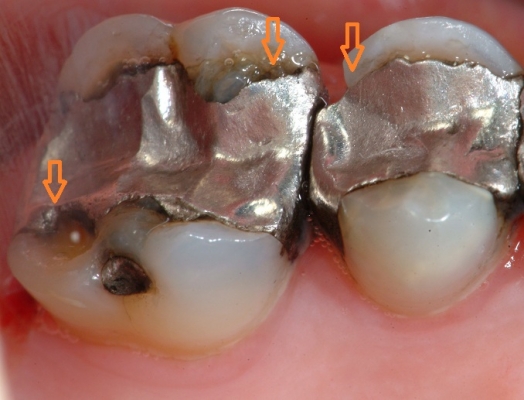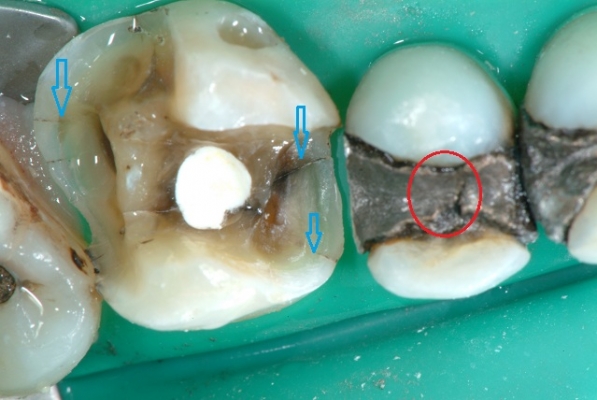Much concern exists among the public regarding the safety of mercury contained in an amalgam filling. The major concern is if mercury is released from the filling resulting in adverse effects to your health.
The Facts About Mercury
Mercury is a highly toxic element and should be avoided as much as possible. Silver fillings are a combination of mercury, silver, copper, tin and other trace metals. Together these metals mix to form an alloy. Our bodies have NO need for mercury and the less mercury we have the better.
Can Mercury Leak from Amalgam (silver) fillings?
YES- It is undeniably true that mercury vapor is released from amalgam fillings, and scientists agree that mercury absorbed in high enough doses will cause health problems. We know that mercury vapors are released from amalgam but the consensus is the amount is well below the FDA accepted daily intake of .4 micrograms per kilogram of body weight. It is somewhat unclear how much mercury would have to be absorbed to cause any problems though the World Health Organization states that: “No controlled studies have been published demonstrating systemic adverse effects from amalgam restorations.” The American Dental Association supports the use of dental amalgam as a safe, affordable and durable material.
Should I replace my amalgam (silver) fillings?
Given the current understanding of amalgam fillings and the supporting research, we do not advise patients to change silver fillings that are otherwise free of any other problems or defects. Amalgam fillings should be treated like any other dental restoration when it comes to replacement. Signs of decay, chipping, ditching, cracking or poor margins are all good reasons to replace any filling. A perfectly good amalgam with no defects is probably best left alone unless it poses a cosmetic concern to you. However, when patients have a desire to change their silver fillings for health concerns, we respect that desire and we are comfortable knowing we can provide a better restoration!
Take a look at amalgam fillings needing replacement due to defects (arrows)
Why We Don’t Use Amalgam Fillings
Since amalgam fillings are not bonded to your teeth, they do not strengthen teeth which have been weakened from the cavity and associated loss of healthy tooth structure. A tooth restored with amalgam does not reinforce your teeth and it is common to see cracks and ultimately fractures of your teeth caused by the way the tooth is wedged with a metal filling between its cusp tips. Also, amalgam fillings require additional removal of healthy tooth structure in order to fit the minimum criteria of depth and size for the amalgam material to perform satisfactorily.
As composites have evolved, they have become the restoration of choice for fillings. In our office, we only use composite restorations for fillings because we can perform a better, more conservative, safer, and more cosmetically pleasing treatment. If placed properly, a composite filling can last longer than amalgam fillings and accomplish conservative treatments not possible with amalgam fillings. Composite fillings only replace the portions of your teeth that have been damaged and no additional reduction of healthy areas of your teeth is required. Additionally, composite restorations are bonded to your teeth. When properly placed with maximum bond strength, the composite restoration can strengthen the weakened tooth
This Large Amalgam Filling resulted in cracks beneath the filling:
Composite restorations offer many advantages including:
1.Cosmetic and esthetic – blends in naturally
2.Smooth and bonded margins- less plaque accumulation and opportunity for recurrent decay
3.Conservative- less tooth structure must be removed to make space for the filling
4.Easily repaired- any chips can easily be repaired seamlessly with surface roughening and addition of composite
5.Reinforces remaining tooth structure- since the composite is bonded to the tooth, it reinforces the remaining structure and prevents wedging forces from causing cracks and fractures with repeated chewing
6.Seals the dentin from future decay

 818-706-0975
818-706-0975